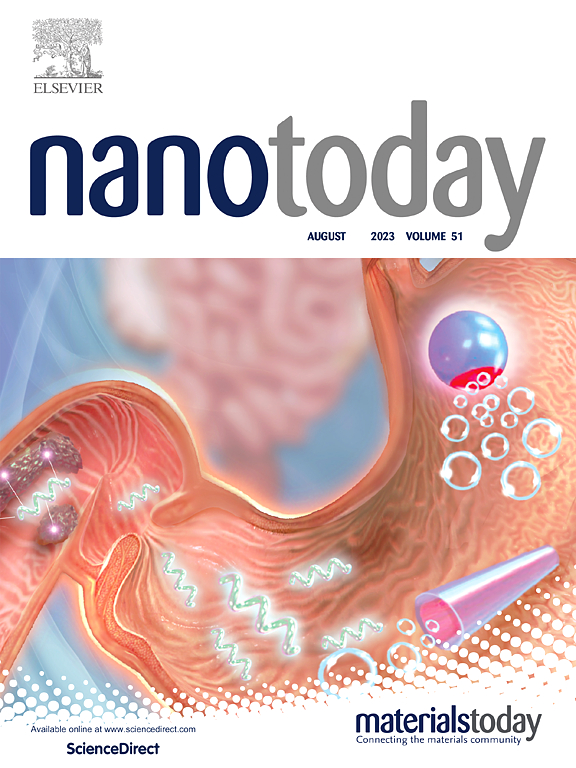Scalable liposomes functionalization via membrane lipid exchange mechanisms
IF 13.2
1区 材料科学
Q1 CHEMISTRY, MULTIDISCIPLINARY
引用次数: 0
Abstract
Extracellular vesicles are pivotal in intercellular communication and hold significant promise for medical applications. However, limitations in their mass production and challenges in replicating their complex functions with artificial liposomes necessitate innovative solutions. We functionalize liposomes by combining the scalable production advantages of artificial liposomes with the vesicle fusion and formation mechanisms of bacteria. By incubating the gram-negative Shewanella oneidensis MR-1, known for its electrochemically active outer membrane cytochromes (OMCs), with liposomes containing 1,2-dioleoyl-sn-glycero-3-phosphoethanolamine for 24 hours, we achieved a substantial yield of membrane-integrated liposomes (MILs) incorporating OMCs. Circular dichroism spectroscopy confirmed the preservation of redox activity and strong inter-heme exciton coupling in the OMCs. These components were successfully delivered to Escherichia coli K-12 by incubation with MILs, retaining their functionality. Furthermore, the slow membrane exchange process did not result in cellular viability loss or lysis, allowing for the recycling of microbial cells and minimizing contaminants from lysed cells, which is advantageous for scaling up. Building on our previous work where MIL-coated titanium dioxide nanoparticles significantly enhanced radical production and effectively treated orthotopic liver tumors in vivo, our methodology to generate the MIL has promising potential to spearhead novel integrations of synthetic and biological systems for medical technologies.
求助全文
约1分钟内获得全文
求助全文
来源期刊

Nano Today
工程技术-材料科学:综合
CiteScore
21.50
自引率
3.40%
发文量
305
审稿时长
40 days
期刊介绍:
Nano Today is a journal dedicated to publishing influential and innovative work in the field of nanoscience and technology. It covers a wide range of subject areas including biomaterials, materials chemistry, materials science, chemistry, bioengineering, biochemistry, genetics and molecular biology, engineering, and nanotechnology. The journal considers articles that inform readers about the latest research, breakthroughs, and topical issues in these fields. It provides comprehensive coverage through a mixture of peer-reviewed articles, research news, and information on key developments. Nano Today is abstracted and indexed in Science Citation Index, Ei Compendex, Embase, Scopus, and INSPEC.
 求助内容:
求助内容: 应助结果提醒方式:
应助结果提醒方式:


